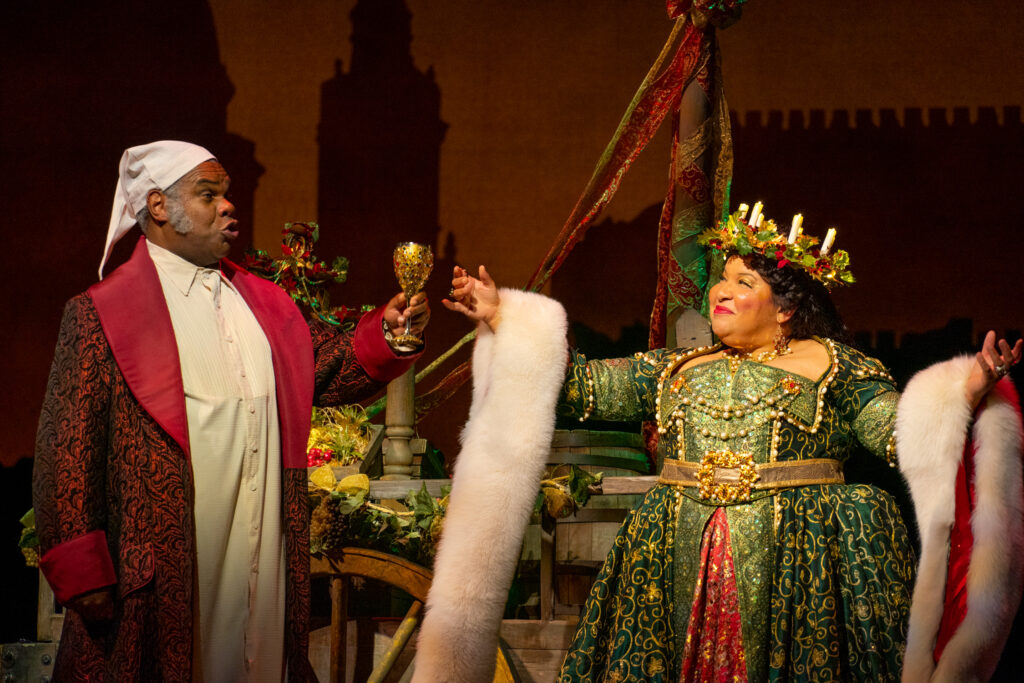‘A Christmas Carol’ at Ford’s
By • November 22, 2023 0 1184

This year — this Dec. 19 to be exact — is the 180th anniversary of the publication of Charles Dickens’s “A Christmas Carol.” If you were one of the 6,000 Londoners who purchased a copy of the illustrated first edition in 1843, you would have paid five shillings, about 26 pounds or 32 dollars in today’s money. (Copies now go for five figures, not five shillings.)
The initial batch sold out in a few days and “A Christmas Carol” has never gone out of print. Frequently adapted for stage and screen, it rivals “The Nutcracker” as an essential experience of the holiday season.
In the Washington, D.C., area, the most elaborate of several live productions is at Ford’s Theatre through Dec. 31. The raked stage and Victorian décor at Ford’s, which opened during Dickens’s lifetime, make it an especially evocative venue and, with fewer than 700 seats, an intimate one.
“A Christmas Carol” has been an annual Ford’s tradition since 1979. The current adaptation, by Michael Wilson — which began its life in 1990 at Houston’s Alley Theatre — came to D.C. in 2004. For this production, Ford’s Director of Artistic Programming José Carrasquillo recreated the original Ford’s staging by Michael Baron, currently producing artistic director of Lyric Theatre of Oklahoma.
In 2016, Craig Wallace took over the role of Ebenezer Scrooge from Ed Gero, who played the most famous miser in English literature for seven seasons. Trained as a classical actor, Wallace was asked by Carrasquillo if he thought the role had Shakespearean parallels.
“Scrooge, like so many kings, thinks he can control the universe and that things like fate and karma don’t apply to him,” responded Wallace. “That, of course, is a foolish notion, but it might be something that Scrooge shares with some of the Bard’s heavies.”
The cast also includes, among others: Stephen F. Schmidt as Scrooge’s deceased partner, chain-dragging Jacob Marley; Jonathan Atkinson as good-hearted, long-suffering Bob Cratchit; Harrison Morford and Harlan Killebrew alternating as Tiny Tim, the ailing Cratchit son (not the ukuleleist); Kimberly Gilbert as the cheery Ghost of Christmas Present; and Justine “Icy” Moral as the spookier Ghost of Christmas Past and the truly bone-chilling Ghost of Christmas Future.
In the original novella called the Ghost of Christmas Yet to Come, the Ghost of Christmas Future — who appears at the 12th stroke of midnight — was described by Dickens as follows: “It was shrouded in a deep black garment, which concealed its head, its face, its form, and left nothing of it visible, save one outstretched hand.” (Note: The show is suggested for age five and older; five-year-olds are clearly made of stronger stuff than I was at that age.)
The tale’s magic is that, though it contains nightmare material, it is also comic, at times approaching farce; yet, it is genuinely moving. The Ford’s production is rich in music, composed by Josh Schmidt, and dance, choreographed by Shea Sullivan. A chorus, including an ensemble of local children, performs under the direction of Jay Crowder. The sets were designed by Lee Savage, the lighting by Rui Rita and the period-style costumes by Alejo Vietti.
Dickens’s concern for the poor, poor children, in particular — who were dying in large numbers from typhus and cholera in mid-19th-century London — was by all accounts sincere. In a letter dated April 3, 1844, sent to a man in Bristol, James Verry Staples, Dickens wrote:
“I assure you that it would have given me heartfelt satisfaction to have been in your place when you read my little Carol to the Poor in your neighbourhood. I have great faith in the Poor; to the best of my ability I always endeavor to present them in a favorable light to the rich; and I shall never cease, I hope, until I die, to advocate their being made as happy and as wise as the circumstances of their condition in its utmost improvement, will admit of their becoming.”
A few years later, Dickens himself began to give public readings of “A Christmas Carol,” continuing until his death in 1870.
Special performances of “A Christmas Carol” at Ford’s include: audio-described performances on Dec. 6 and 16; discounted tickets for ages 21 to 40 on Dec. 7, with a post-show reception in partnership with District Fray/On Tap; a sensory-friendly performance on Dec. 10; and an ASL sign-interpreted performance on Dec. 14.
A Christmas Carol
Through Dec. 31
Ford’s Theatre, 511 Tenth St. NW
888-616-0270
fords.org

